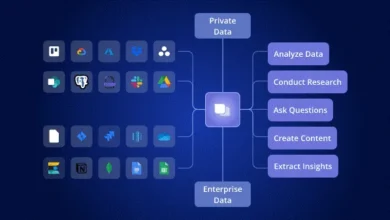What is DevOps and DevOps lifecycle?

DevOps has emerged as a crucial methodology driving efficiency, collaboration, and innovation in software development and deployment in today’s rapidly evolving technological landscape. DevOps, a portmanteau of “development” and “operations,” represents a cultural shift in how software teams collaborate, emphasizing communication, automation, and continuous integration and delivery (CI/CD) practices. At its core, DevOps aims to break down the silos between the development and operations teams, fostering a collaborative environment where software can be developed, tested, and deployed rapidly and reliably. Understanding the DevOps lifecycle is essential for organizations to streamline their software development processes and efficiently deliver high-quality products. In this blog, we delve into the fundamentals of DevOps and explore its lifecycle stages, shedding light on how this methodology revolutionizes software development practices.
DevOps has emerged as a rapidly growing career path in the technology industry, driven by the increasing demand for efficient and collaborative software development practices. Organizations worldwide are adopting DevOps methodologies to accelerate their software delivery pipelines, improve product quality, and enhance operational efficiency. Pursuing DevOps training online can be instrumental in building a successful career in this sector. Online courses offer comprehensive learning modules covering fundamental DevOps principles, tools, and practices, equipping learners with the necessary skills to thrive in DevOps roles. Moreover, online training provides flexibility and accessibility, allowing individuals to gain knowledge at an individual pace and schedule. By gaining expertise in areas such as continuous integration, automation, containerization, and cloud computing, individuals can position themselves as valuable assets in the DevOps landscape, opening up many career opportunities in a rapidly expanding field.
What is DevOps?
DevOps is a software development approach emphasizing collaboration, integration, automation, and communication between software development (Dev) and information technology operations (Ops) teams. It aims to streamline the software delivery process, from code development to deployment and maintenance, by breaking down the silos and fostering a culture of collaboration and continuous improvement. DevOps practices include version control, continuous integration (CI), continuous delivery (CD), infrastructure as code (IaC), and automated testing, among others. By implementing DevOps, organizations can achieve faster delivery of software, improved deployment frequency, higher quality of code, and more reliable and scalable infrastructure. Ultimately, DevOps enables organizations to respond quickly to market changes, deliver customer value more efficiently, and maintain a competitive edge in today’s fast-paced technology landscape.
DevOps Lifecycle
The DevOps lifecycle is a continuous process encompassing planning, development, testing, deployment, monitoring, and feedback. It integrates development and operations teams to streamline software delivery, automate processes, and foster collaboration. The lifecycle aims to ensure rapid, reliable, and continuous software delivery, allowing organizations to respond quickly to market changes and efficiently deliver value to customers.
These are the DevOps lifecycle:
The DevOps lifecycle encompasses a series of interconnected processes aimed at delivering high-quality software efficiently and continuously. Here’s an elaborate explanation of each phase:
Discover: The discovery phase involves understanding the needs and requirements of stakeholders, customers, and end-users. Teams gather feedback, analyze market trends, and conduct research to define the scope and objectives of the project. This phase sets the foundation for subsequent planning and development activities by ensuring alignment with business goals and user expectations.
Plan: During the planning stage, teams create a roadmap for the project, outlining tasks, timelines, and resource allocations. They define project goals, prioritize features, and establish metrics for success. Planning also involves identifying potential risks and mitigating strategies to ensure smooth execution. Effective planning ensures that teams are aligned, resources are optimized, and expectations are managed throughout the project lifecycle.
Build: In the build phase, developers write code and create software components based on the specifications outlined in the planning stage. They collaborate to integrate code, implement features, and ensure code quality through practices such as code reviews and continuous integration (CI). Automation tools often streamline the build process, enabling faster and more efficient development cycles.
Test: Testing is a critical phase where teams verify the software’s functionality, performance, and reliability. Various testing techniques, including unit testing, integration testing, and end-to-end testing, are employed to identify bugs, errors, and inconsistencies. Test automation frameworks and continuous testing practices help accelerate testing while ensuring comprehensive test coverage. Testing ensures the software meets quality standards and delivers a seamless user experience.
Deploy: Deployment involves releasing the software into production environments, making it accessible to end-users. Deployment pipelines and automation tools facilitate the smooth and reliable deployment of software updates, patches, and new features. Continuous deployment practices enable teams to deliver changes quickly and frequently, minimizing downtime and maximizing efficiency.
Operate: Once deployed, the software enters the operational phase, where end-users actively use it. Operations teams monitor the software’s performance, availability, and security, ensuring smooth operation and timely resolution of any issues. Continuous monitoring and proactive maintenance practices help optimize performance, enhance security, and minimize downtime, ensuring a positive user experience.
Observe: Observability is critical to understanding how the software behaves in production environments. Teams collect and analyze data on application performance, user interactions, and system health to gain insights into the software’s behaviour and identify areas for improvement. Monitoring tools, log analysis, and performance metrics enable teams to detect anomalies, troubleshoot issues, and optimize system performance in real time.
Continuous Feedback: Continuous feedback loops are integral to the DevOps lifecycle, facilitating communication and collaboration between development, operations, and other stakeholders. Feedback mechanisms, such as user feedback, incident reports, and performance metrics, enable teams to iterate on the software continuously, incorporating user input and addressing issues promptly. Continuous feedback fosters a culture of continuous improvement, innovation, and responsiveness, driving the evolution of the software to meet changing business needs and user expectations.
Conclusion
Understanding the DevOps methodology and its lifecycle is essential for modern software development practices. Pursuing DevOps training online offers numerous benefits for individuals aspiring to build a career in this field. Online courses provide comprehensive learning modules covering fundamental DevOps principles, tools, and practices, enabling learners to acquire valuable skills and expertise at their own pace. Additionally, online training offers flexibility and accessibility, allowing individuals to balance their learning with other commitments. By gaining proficiency in DevOps through online training, individuals can enhance their career prospects, unlock new opportunities, and become valuable assets in the technology industry, where DevOps practices are increasingly becoming standard.



